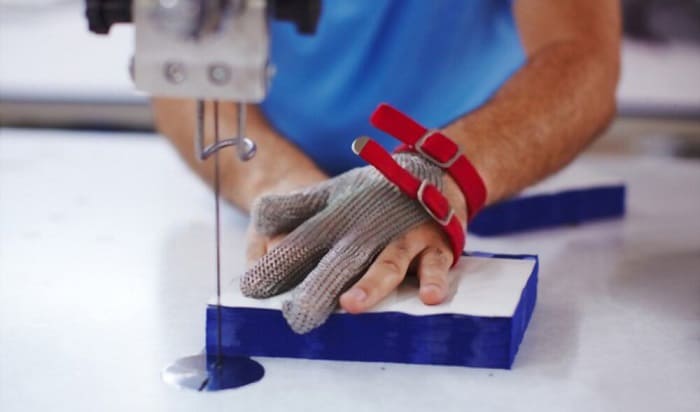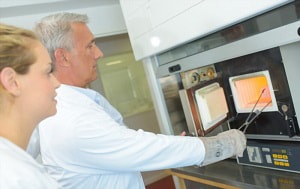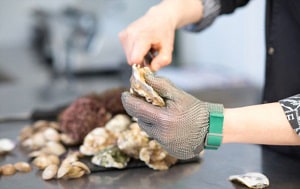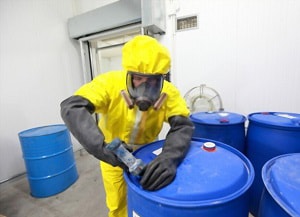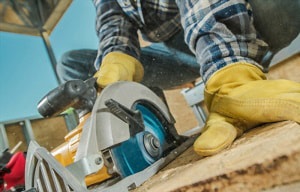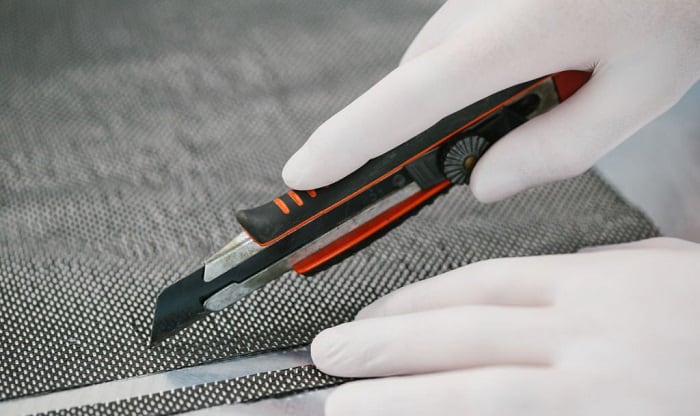Kevlar – a material five times stronger than steel – is lightweight, heat-resistant, chemical-resistant, and bulletproof. Its applications range from personal armor to motorcycle clothing and work gear.
So, what are Kevlar gloves used for? What jobs require such heavy-duty handwear? Due to Kevlar gloves’ impressive protection, they are must-haves for many risky occupations, such as butchers, welders, carpenters, loggers, and hunters.
In this article, we will explain the top three protective features of Kevlar and what professions can benefit from them.
Table of Contents
Kevlar Gloves: What Are They Used for?
Kevlar is a kind of plastic. It is born from chemical reactions between an acid and a substance containing nitrogen and hydrogen. The reactions result in incredibly strong molecular chains.
The chemical compound must go through further processing to finally form a piece of Kevlar fabric. This fabric is sturdy yet flexible. Manufacturers can cut, sew it into form-fitting clothes, and laminate it in other materials.
The flexibility makes Kevlar perfect for fabricating safety work gloves. What are those gloves for?
1. Protecting workers from extensive heat
Unlike most plastics, Kevlar does not melt, combust, or drip. It has super strength, a unique structure, and thermal stability. High-quality Kevlar gloves can withstand up to 450°C (850°F), which is the melting point of zinc.
Kevlar might catch on fire, but the burning immediately stops when the source is removed. It doesn’t support combustion. Thus, you will find Kevlar linings in some BBQ gloves.
The material maintains its resilience in subzero temperatures. Studies have shown that Kevlar is stronger when introduced to a −196 °C (−320 °F) environment.
However, a Kevlar glove’s tensile strength reduces after constant exposure to heat. Within 70 hours of enduring 260 °C (500 °F), Kevlar loses half of its toughness.
Also, some metals melt at extreme temperatures, such as gold (1063°C), copper (1084°C), or tungsten (3400°C). For metal work that involves welding, melting, or molding such metals, Kevlar gloves are not sufficient.
2. Protecting against cuts and punctures
The most well-known feature of Kevlar is its cut and abrasion resistance. Since Kevlar’s fibers bond tightly on a molecular level, they are not easy to penetrate. The toughest Kevlar gloves can withstand the force of a 6000-gram (13-pound) blade.
This unique feature makes the top-rated mechanics gloves as mechanics face the risk of falling objects from working under vehicles, scratches from heavy tools, and even bursting fire.
The material is also puncture-resistant. Thus, cut-resistant Kevlar gloves are crucial for heavy construction, rigging, mining, and rescue. Sometimes, you will find Kevlar-lined gloves in motorcycle and sports stores.
3. Resisting chemical attacks
Although Kevlar is not the most effective chemical-resistant material, it can resist attacks from a wide range of harmful substances. When soaked in hot water for 200 days, Kevlar remains unaltered.
However, it degrades when exposed to strong acids and solvents. It is usually used along with other coatings in chemical-resistant gloves.
Safety Precautions When Using Kevlar Gloves
1. Kevlar gloves are not knife-proof
While Kevlar bulletproof vests protect against knives, syringes, and spikes, Kevlar gloves do not offer the same benefits. A pair of handwear must prioritize dexterity and comfort over high protection.
No glove is completely knife-proof. If you stab a sharp blade against a high-quality Kevlar pair several times, it will start to deteriorate.
So, never rely on your gloves and make direct contact with a sharp object. Kevlar cutting gloves are only for minimizing injuries when accidents happen.
To create a safe working environment, you should perform other practices besides protective handwear, such as:
- Using cutting tools of the right type, size, and material for each specific task
- Maintaining cutting tools properly
- Wrapping the cutting jaws with burlap bags to prevent flying metals
2. You must choose the right cut-resistant gloves for your tasks
Not all Kevlar gloves provide the same level of cut resistance. You should check the rating of a pair before purchasing. The ANSI/SEA standard range sharp gloves’ protection levels from A1 to A9, with A9 being the highest.
The right gloves for your tasks must offer comfort, flexibility, and protection. When dealing with meticulous tasks, you might have to sacrifice safety for dexterity. When handwear hinders your finger movements, you face higher risks of injuries.
For example, you only need A5 Kevlar garden gloves when taking care of menacing plants (e.g., cactus, hawthorn, locust, or pyracantha). Otherwise, a cotton or leather pair can handle most tasks in the garden.
3. You must maintain, inspect, and dispose of Kevlar gloves correctly
Always inspect your PPE before each use. You should check for any holes, tears, or weak areas. Don’t wear gloves that lack integrity.
Kevlar gloves usually have a service life of five years, but this depends on the frequency of use, storage condition, and maintenance. Never wear gloves that pass their shelf lives.
Additionally, clean your gloves and dry them properly. Check the care instructions to know the cleaning procedure you should apply. You must take care of your PPE so they can, in turn, protect your hands.
When you need to dispose of Kevlar gloves, put them in a regular trash can. If they are contaminated with hazardous chemicals or blood, you must discard them separately.
FAQs
1. Can I use Kevlar gloves for arc welding?
An arc welding requires temperatures of up to 5,500 °C (10,000 °F). In such intense procedures, Kevlar can’t ensure safety. You will need aluminum-foiled gloves to protect against welding sparks, molten metal splash, and slags.
2. What might degrade Kevlar?
Though the material remains strong and reliable under many harsh conditions, exposure to ultraviolet light and strong acids will discolor and damage its fiber.
3. Do I need Kevlar stitches in my cut-resistant gloves?
Kevlar linings are effective in preventing injuries from cuts or abrasions, but you don’t need Kevlar in all cut-resistant gloves. For example, A1 cutting gloves are for protecting against paper cuts and light scratches. In that case, a cotton or silicon pair is enough for an adequate barrier.
Conclusion
To sum up, what are Kevlar gloves used for? They are for keeping workers’ hands safe from heat, punctures, cuts, and some types of chemicals.
The applications of Kevlar do not stop there, though. It is also used in work boots, bulletproof vests, combat helmets, and sports equipment.
At the workplace, 40% of hand injuries happen because workers neglect to wear gloves. We are glad that you look into different types of PPE and take responsibility for your safety. Thank you for reading!

Veronica is our content editor. She is a talent in delivery. Her main work is editing and writing articles that are both informative and simple to follow. She is in charge of synthesizing our understanding of what personal protection equipment (PPE) is needed in each job, how to best apply it, and how to visualize that equipment.


